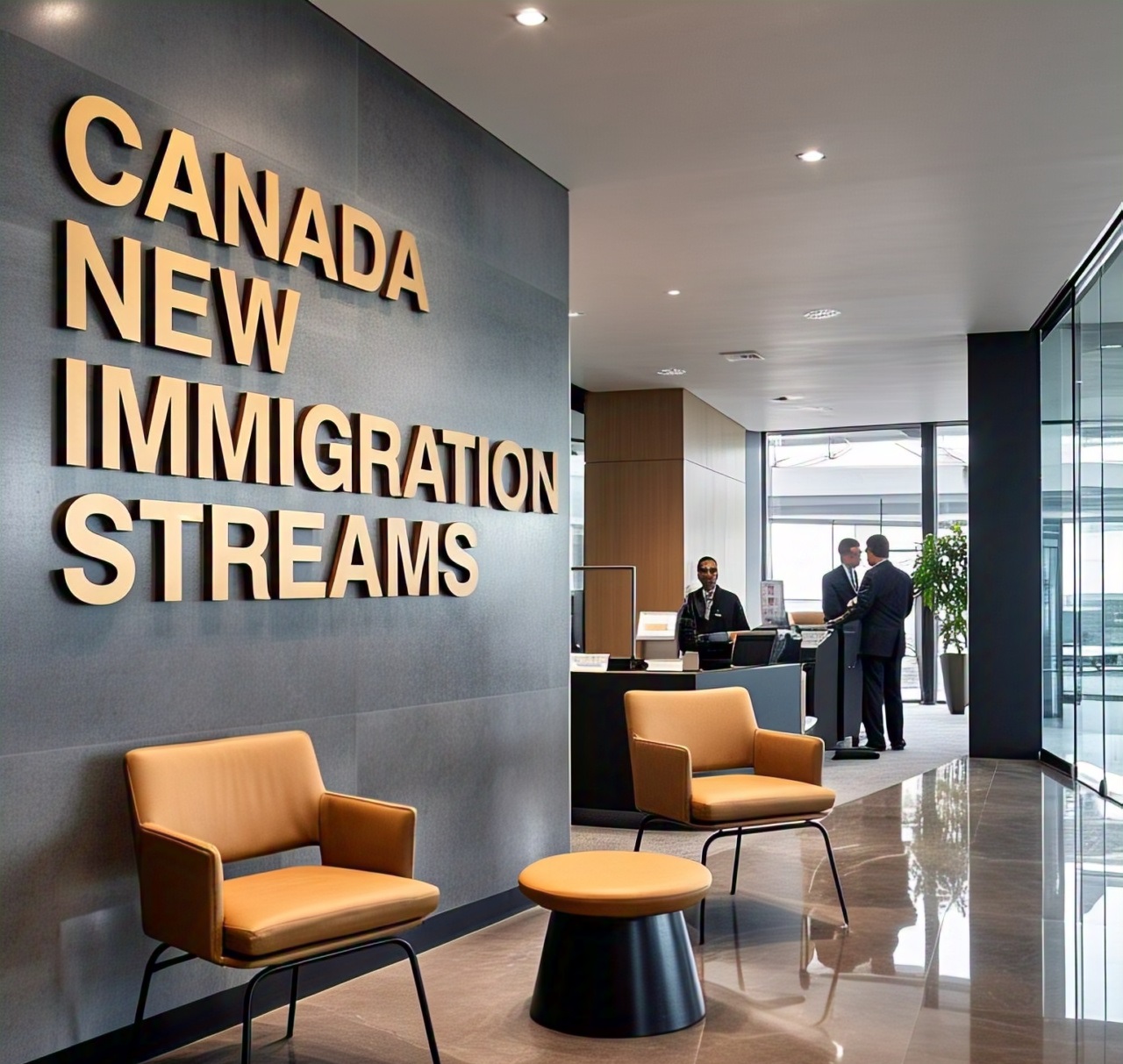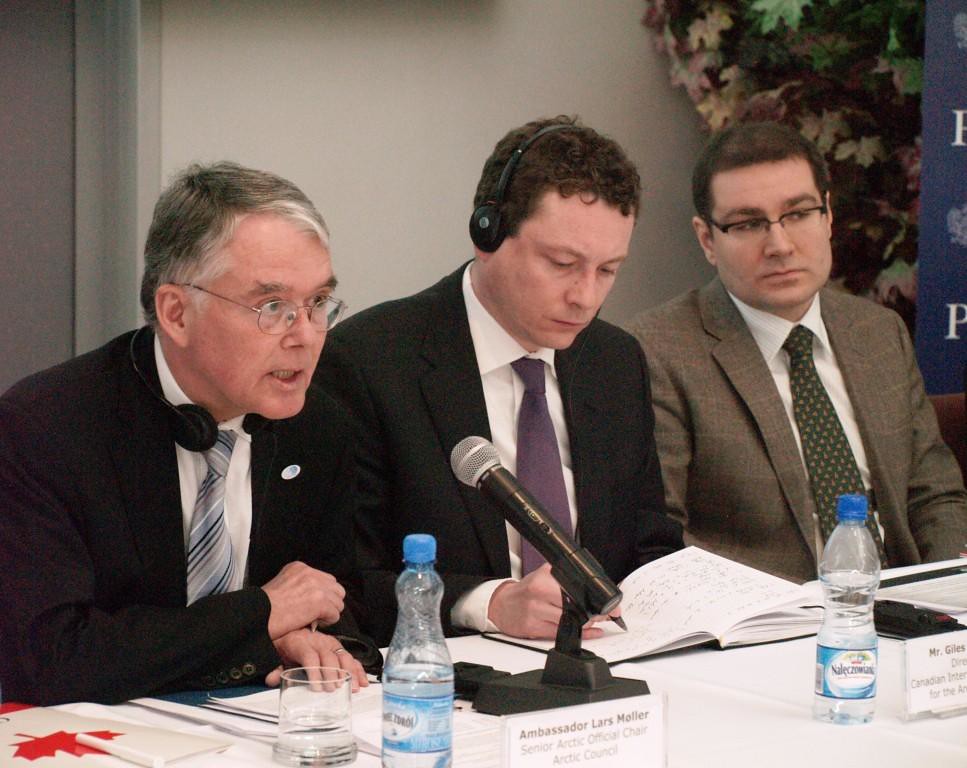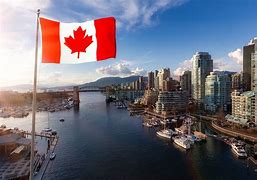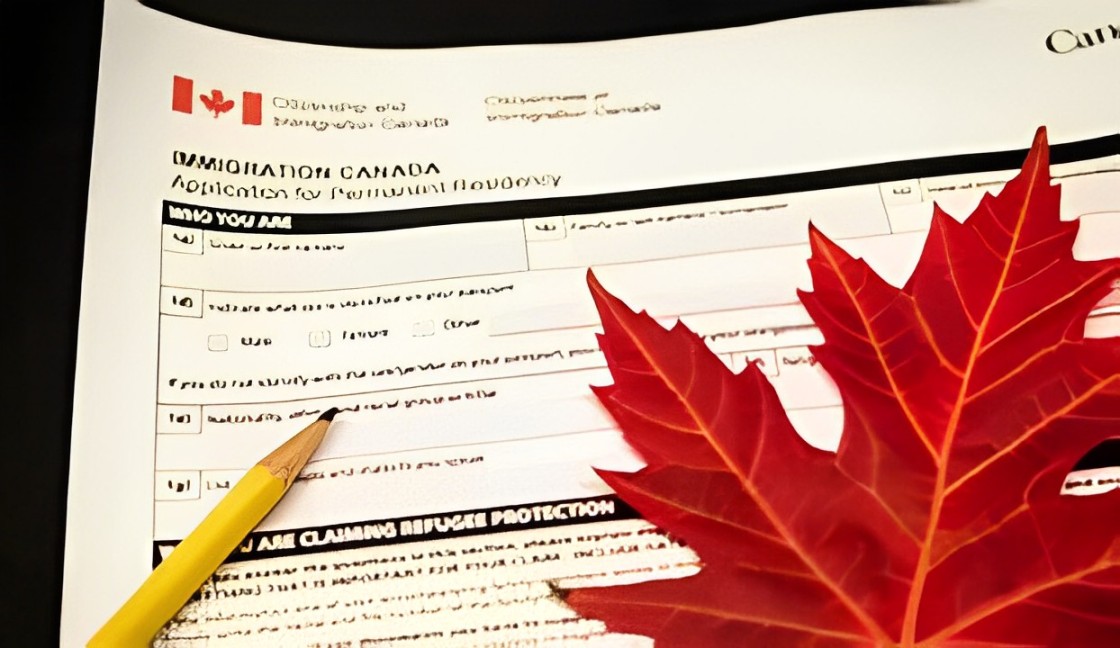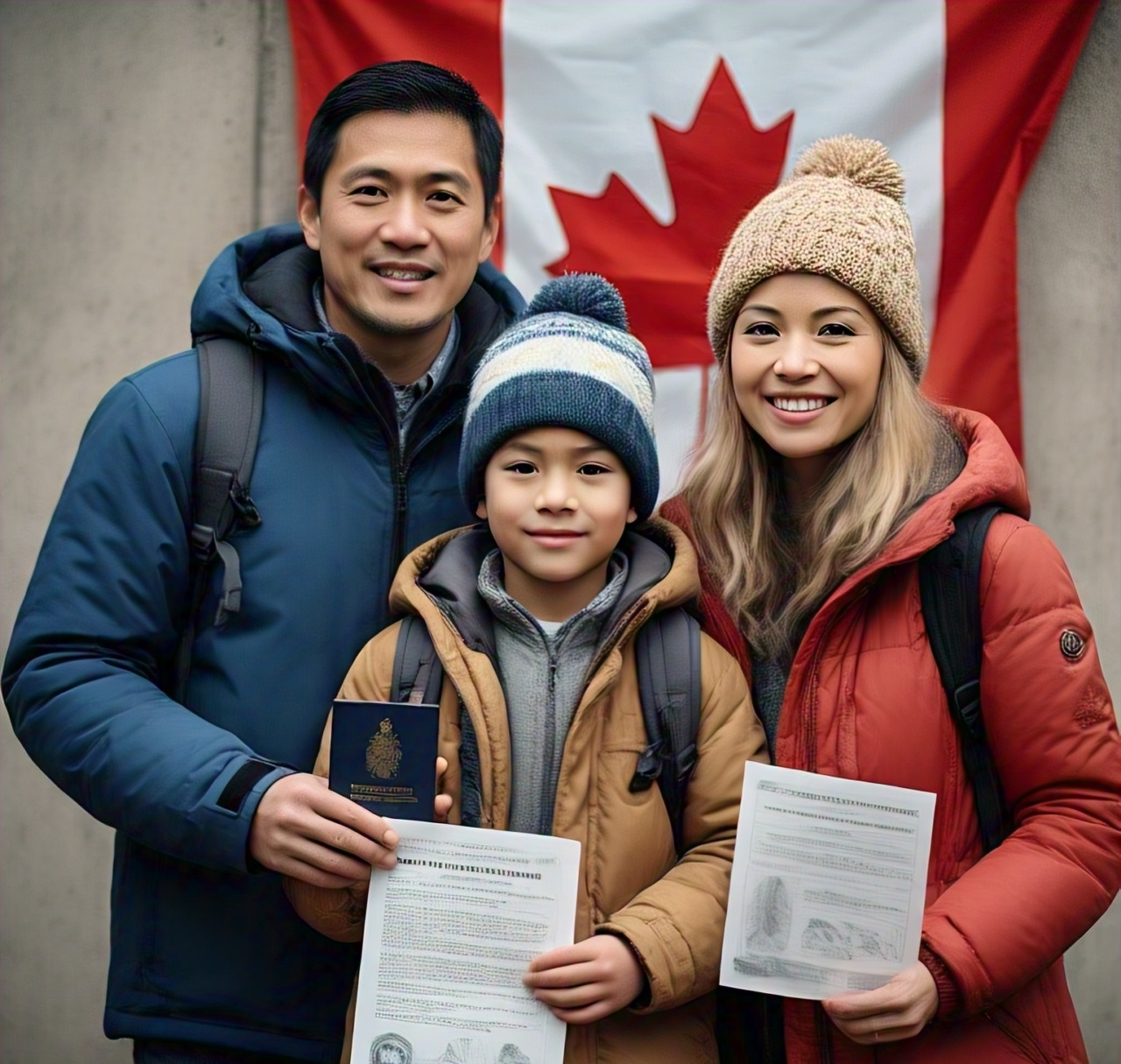As we approach 2025, Canada is set to launch four brand-new immigration streams aimed at attracting skilled workers from around the globe. These streams promise exciting opportunities for individuals planning to relocate to Canada, providing unique pathways for permanent residency and employment. Here’s everything you need to know about these programs, how to prepare, and why they could be your ticket to starting a new life in Canada. 1. Enhanced Caregiver Program This program will replace the existing Home and Child Caregiver programs that have been in place for several years. One of the most exciting features of the Enhanced Caregiver Program is the opportunity to obtain permanent residency (PR) upon arrival. Successful applicants will receive their PR status immediately at their port of entry—a significant improvement over previous caregiver programs. In addition, this program offers flexibility in employment. Unlike the old programs, participants can choose between part-time and temporary work instead of being restricted to permanent roles. If you have experience in caregiving, this is a golden opportunity worth considering. 2. Francophone Community Stream Canada is a bilingual country with a strong emphasis on preserving its French heritage. This stream aims to strengthen Francophone communities outside Quebec, particularly in provinces like New Brunswick and other areas where French is widely spoken. Applicants must demonstrate proficiency in French, making this an excellent option for individuals from French-speaking countries or those with strong French language skills. With Canada’s commitment to promoting bilingualism, this program is poised to be highly beneficial for Francophone immigrants. 3. Rural Community Immigration Program This program targets individuals willing to live and work in Canada’s rural areas. Many skilled workers gravitate toward urban centers like Toronto, Vancouver, and Halifax, leaving rural communities underserved. This stream is designed to address that gap by encouraging immigration to smaller towns and rural regions that also need skilled labor. For those who prefer a quieter lifestyle and can contribute to the growth of these communities, this program offers a unique and fulfilling opportunity. 4. Manitoba West Central Immigration Program Focused on Manitoba’s West Central region, this program addresses the specific labor needs of rural municipalities in the province. Manitoba is known for its harsh winters, so prospective applicants should be prepared for cold temperatures. Despite the weather, this stream provides a unique opportunity to live and work in one of Canada’s lesser-explored provinces. Key Criteria for All Streams While specific details are still being finalized by Immigration, Refugees and Citizenship Canada (IRCC), there are some general criteria that applicants should prepare for: How to Prepare If you’re considering applying for any of these streams, the time to start preparing is now. Here’s how: 1. Evaluate Your Educational Credentials: Submit your qualifications for assessment by recognized organizations like WES or alternatives. Keep in mind that processing times can be lengthy, so act early. 2. Improve Your Language Skills: Prepare for and schedule your English or French language proficiency exams. 3. Gather Relevant Work Experience: Document your professional experience to meet program requirements. Final Thoughts The new immigration streams set to launch in 2025 represent a bold step by Canada to address labor shortages and support underserved communities. By preparing in advance, you can position yourself to take advantage of these opportunities.. Here’s to a brighter future in Canada! For more insights and updates, stay connected and explore how these streams can transform your life. Let Worldbridge Immigration Services be your guide to a successful future in Canada Contact us: Website: www.theworldbridge.ca Email: info@theworldbridge.ca Phone/WhatsApp: +1-416-727-7766 Social Media: @worldbridgeHQ
Canada Ends 10-Year Tourist Visas: What Travelers Need to Know
In a surprising move, Canada has made significant changes to its visa policies, discontinuing the automatic issuance of 10-year multiple-entry tourist visas. This decision has far-reaching implications for tourists, business travelers, and families visiting Canada. The policy shift introduces shorter and stricter visa terms, replacing the flexibility that many travelers once enjoyed. This article explores the reasons behind the change, its impact on travelers, and practical steps you can take to navigate the new system effectively. The End of an Era For years, Canada’s 10-year multiple-entry tourist visa was a hallmark of its immigration policy. This visa allowed travelers to enter Canada multiple times over a decade, provided no single stay exceeded six months. It was particularly beneficial for frequent visitors, including business professionals, families reconnecting across borders, and tourists eager to explore Canada’s breathtaking landscapes and vibrant cities. However, in late 2024, the Canadian government announced that this visa would no longer be automatically issued. Immigration officers now assess applications on a case-by-case basis, often resulting in shorter visa durations. Why Did Canada Make This Change? 1. Overburdened Immigration System Canada’s immigration system has faced increasing pressure due to a surge in applications for permanent residency, study permits, work permits, and visitor visas. The growing demand, fueled by Canada’s reputation as a safe and stable destination, has created significant processing backlogs. By phasing out long-term tourist visas, the government aims to reduce strain on the system and allocate resources to higher-priority categories, such as skilled workers and international students. 2. Misuse of Tourist Visas The misuse of 10-year tourist visas also played a role in the policy shift. Some individuals exploited the system by repeatedly leaving and re-entering Canada to reset their six-month stay limit, effectively creating a semi-permanent residency. Others used tourist visas to work informally, bypassing labor regulations. These activities not only violated immigration rules but also placed additional pressure on enforcement resources. 3. National Priorities Canada is grappling with domestic challenges such as a housing affordability crisis and overburdened public infrastructure. While tourists are not the direct cause of these issues, the government has adopted a comprehensive approach to managing population pressures. Tightening visitor policies allows Canada to better allocate resources to permanent residents and skilled workers, who contribute more sustainably to the economy. How This Affects Travelers The discontinuation of automatic 10-year tourist visas has introduced new challenges for prospective visitors: 1. Uncertainty in Visa Approvals Previously, meeting basic criteria often guaranteed a 10-year visa. Now, visa durations are determined individually, with single-entry or shorter-term multiple-entry visas becoming the norm. Travelers must adjust to the uncertainty of reapplying more frequently. 2. Stricter Application Requirements Applicants now face heightened scrutiny. They must provide comprehensive evidence of financial stability, strong ties to their home country, and a history of compliance with visa rules in Canada and other nations. Examples of required documentation include: Proof of sufficient funds for the trip Employment or property records demonstrating intent to return home Records of compliance with previous visa conditions 3. Impact on Specific Groups Frequent Travelers: Business professionals and families who frequently visit Canada may face increased application costs and delays. Travelers from High-Volume Nations: Countries like India, China, and the Philippines, which have large diasporas in Canada, are expected to experience longer processing times and more rigorous evaluations. Low-Income Applicants: Shorter visa durations may create financial strain, especially for those from developing countries who need to reapply more often. Economic and Social Ripple Effects The changes have raised concerns across various sectors: Tourism Industry Canada’s tourism sector, which generated approximately $45 billion in 2022, relies heavily on international visitors. The shift to shorter-term visas may discourage repeat visits, potentially reducing revenue for hotels, restaurants, and transportation services. Regions like British Columbia, where tourism plays a central role in the economy, may feel the impact most acutely. Business Travel Canada is a hub for international trade and conferences, attracting professionals who rely on long-term visas. The new restrictions could complicate travel plans and discourage companies from hosting or attending events in Canada. Perception of Canada The ease of obtaining a long-term visa once contributed to Canada’s reputation as a welcoming and accessible destination. The new policies, perceived as cumbersome, risk deterring potential visitors. How to Adapt Despite the challenges, travelers can take steps to navigate the updated visa policies: 1. Apply Early Submit your visa application well in advance to account for potential delays and additional documentation requests. 2. Consider Visa Extensions If you’re already in Canada, explore the option of extending your visitor visa instead of reapplying from your home country. 3. Check ETA Eligibility Travelers from visa-exempt countries can use the Electronic Travel Authorization (ETA) system for short-term approvals. 4. Seek Professional Guidance Immigration consultants or lawyers can help streamline your application process and improve your chances of approval. 5. Maintain a Strong Travel Record Compliance with past visa conditions strengthens your application and increases the likelihood of obtaining a longer-term visa. Looking Ahead Canada’s decision to end automatic 10-year tourist visas reflects a broader shift toward a more controlled and selective immigration system. While the country remains open to visitors, it prioritizes applicants aligned with its long-term economic and social goals. Future reforms may include enhanced digital systems to improve processing efficiency and expanded pathways for skilled workers and international students. These changes aim to balance Canada’s reputation as a welcoming nation with the practical need to manage immigration effectively. Conclusion Canada’s updated visa policies mark a significant departure from its previous approach. While the changes introduce new hurdles, preparation and awareness can help travelers adapt. As Canada continues to refine its immigration system, staying informed and proactive will be key to navigating these new rules. If you’re planning to visit Canada, start your application early and consult with experts to ensure a smooth process. Let Worldbridge Immigration Services be your guide to a successful future in Canada Contact us: Website: www.theworldbridge.ca Email: info@theworldbridge.ca Phone/WhatsApp: +1-416-727-7766 Social Media: @worldbridgeHQ
IRCC Announces New Measures for Temporary Residents
The Immigration, Refugees, and Citizenship Canada (IRCC) recently announced significant changes impacting temporary residents in Canada. These updates, revealed on September 18, 2024, follow closely on the heels of other pivotal policy adjustments made in August. Below is a comprehensive breakdown of these new measures: Changes to Study Permit Intake Cap The IRCC has revised the annual cap on study permit applications. In 2024, the cap was set at 485,000 applications, but this will be reduced by 10% in 2025, bringing the new limit to 437,000 applications. A critical update for 2025 is that Master’s and PhD students, previously exempt from the cap, will now be included. Additionally, these students must submit a provincial attestation letter along with their applications. This requirement is a notable departure from the current policy, where such students do not require this document. Postgraduate Work Permit (PGWP) Updates Starting November 1, 2024, international students applying for a PGWP must include language test results with their applications. The language proficiency requirements are as follows: Work Permit Restrictions for Spouses IRCC has also tightened work permit eligibility for spouses of international students and foreign workers. Key changes include: 1. Spouses of International Students: Eligibility will be limited to spouses of students pursuing Master’s degrees lasting 16 months or longer. Spouses of students enrolled in programs of one year or less will no longer qualify for work permits. 2. Spouses of Foreign Workers: Eligibility will be restricted to spouses of foreign workers employed in management or professional occupations or in sectors experiencing labor shortages. This replaces the current policy allowing spouses of workers in all Tier 0–5 occupations to apply for work permits. Implications of the Changes These policy updates reflect IRCC’s intent to significantly reduce the number of temporary residents in Canada. By 2026, the goal is to lower the proportion of temporary residents from 6.5% to 5% of Canada’s total population. This will likely result in stricter eligibility requirements for those seeking to transition to permanent residency or secure work permits. Individuals whose skills and education align with Canada’s long-term goals may find opportunities, while others may face challenges either remaining in or entering Canada. In summary, these measures signal a clear message: Canada is prioritizing high-skilled and strategically aligned immigration pathways. Temporary residents and prospective applicants must adapt to these changes to align with the country’s evolving immigration priorities. Let Worldbridge Immigration Services be your guide to a successful future in Canada Contact us: Website: www.theworldbridge.ca Email: info@theworldbridge.ca Phone/WhatsApp: +1-416-727-7766 Social Media: @worldbridgeHQ
Canada Extends TR to PR Work Permits Until 2026: A Game-Changer for Immigrants and Employers
The Canadian government has introduced a groundbreaking update to its immigration framework by extending the Temporary Resident to Permanent Resident (TR to PR) open work permit policy until December 31, 2026. This move is set to benefit thousands of individuals and their families, offering stability and opportunities for those striving to make Canada their permanent home. This policy extension not only addresses the pressing challenges faced by temporary residents but also signals a forward-thinking approach to strengthening Canada’s immigration system. Here’s an in-depth look at what this extension means for immigrants, employers, and the broader Canadian workforce. Addressing Key Immigration Challenges Canada’s immigration system is celebrated globally for its inclusivity, attracting skilled workers, reuniting families, and offering refuge to vulnerable individuals. However, it has not been without its challenges. Delays in processing permanent residency applications have created significant hardships for many temporary residents, especially those in critical sectors like healthcare, manufacturing, and construction. For international graduates, essential service workers, and healthcare professionals, nearing the expiration of their work permits can bring immense uncertainty. This threatens their ability to continue working and supporting their families while navigating the complex path to permanent residency. These systemic delays have also strained public confidence in Canada’s immigration framework, raising doubts about its ability to meet ambitious immigration targets. Employers, facing widespread labor shortages, are left grappling with operational disruptions and increased recruitment costs due to the loss of skilled workers. Families endure financial instability, disrupted schooling for children, and restricted opportunities for spouses, leaving many in limbo. The TR to PR Pathway: A Lifeline for Skilled Workers The TR to PR pathway was first introduced in 2021 to address critical labor shortages exacerbated by the COVID-19 pandemic. The program provided a direct route to permanent residency for individuals already contributing to vital sectors like healthcare, food supply, and public safety. It was targeted at three main groups: 1. Workers in essential services, including healthcare and supply chain roles 2. International graduates from Canadian post-secondary institutions 3. Professionals with experience in high-demand fields With over 90,000 applications submitted before the program closed in November 2021, the TR to PR pathway was a resounding success. However, its closure left thousands of applicants in uncertainty as they waited for their applications to be processed. The newly extended open work permit policy addresses these challenges by offering flexibility and security to both individuals and their families. Open Work Permits: Flexibility for Immigrants and Employers Open work permits (OWPs) are a critical component of Canada’s immigration system, allowing foreign nationals to work for any employer without the restrictions of employer-specific permits. This flexibility is especially valuable for those awaiting permanent residency, as it enables them to maintain employment without the need for repeated authorization. The advantages of open work permits extend beyond individual workers: For workers: they provide the freedom to explore career opportunities that align with their skills and ambitions. For employers: they help address labor shortages by providing access to a broader talent pool without bureaucratic delays. For families: they ensure financial stability and unity, as spouses and dependent children of applicants can also qualify for these permits. This policy benefits industries with urgent labor needs, such as healthcare, construction, and technology, by reducing turnover and ensuring a steady workforce. Eligibility Criteria for the TR to PR Work Permit Extension To qualify for an open work permit under this policy extension, applicants must meet specific requirements: For Principal Applicants: For Family Members: Aligning with Canada’s Immigration Goals The extension of the TR to PR open work permit policy reflects Canada’s commitment to creating a more inclusive and resilient immigration framework. By allowing applicants and their families to remain active in the workforce, the policy addresses labor shortages while fostering a sense of belonging among newcomers. This proactive approach positions Canada as a global leader in attracting and retaining skilled immigrants, ensuring economic stability, and strengthening social cohesion. For applicants, the policy offers job security and a clearer path to integration into Canadian society. For employers, it reduces recruitment costs and workforce disruptions, creating a more reliable labor market. Practical Tips for Applicants To make the most of this policy, applicants should: Gather all required documentation, including proof of temporary resident status and language test results. Submit their applications through Immigration, Refugees, and Citizenship Canada’s secure online portal. Monitor updates regularly and consult an immigration expert if challenges arise. This policy extension provides a unique opportunity for immigrants to build their future in Canada while contributing to the country’s economic and social development. Conclusion The TR to PR open work permit policy extension until 2026 is more than just a stopgap measure; it is a transformative step toward a more robust and inclusive immigration system. By addressing the challenges faced by temporary residents, this policy supports Canada’s broader vision of growth, inclusion, and resilience. Immigrants and their families can now work with greater security, employers can retain skilled talent, and Canada continues to strengthen its position as a top destination for global talent. Let Worldbridge Immigration Services be your guide to a successful future in Canada Contact us: Website: www.theworldbridge.ca Email: info@theworldbridge.ca Phone/WhatsApp: +1-416-727-7766 Social Media: @worldbridgeHQ
SELF-EMPLOYED PERSONS PROGRAM: CANADIAN IMMIGRATION FOR SELF-EMPLOYED WORKERS
Are you self-employed and dreaming of making Canada your new home? With a growing number of individuals around the world embracing self-employment, Canada has created the Self-Employed Persons Program to support skilled professionals in arts, culture, recreation, and sports who aspire to immigrate. This article provides an overview of the program, its requirements, and the application process to help you better understand how to qualify and start your journey toward living and working in Canada. Program Requirements To qualify for the Self-Employed Persons Program, applicants must meet the following requirements: 1. Relevant Experience: Applicants must demonstrate at least two years of self-employment or participation in international-level cultural or athletic activities within the last five years. 2. Ability and Willingness to Be Self-Employed in Canada: Applicants must show they intend to continue self-employment in Canada. 3. Selection Criteria: Applicants are assessed based on education, experience, age, language proficiency, and adaptability. 4. Medical and Security Standards: Applicants must pass medical examinations and security background checks to meet Canada’s admissibility standards. Eligible Occupations Only occupations under Unit Group 5 of the National Occupation Classification (NOC) are eligible for this program. These typically include professions in arts, culture, recreation, and sports. Examples of qualifying occupations are: 1-Photographers 2-Editors and journalists 3-Singers and dancers 4-Librarians 5-Comedians and actors Applicants must provide substantial proof of their contributions to these fields and their ability to thrive as self-employed professionals in Canada. Selection Criteria Canadian officials evaluate applicants based on a points-based system, which assesses five key factors: A total score of up to 100 points can be awarded, with a minimum of 35 points required to be considered eligible for the program. Application Process The application process for the Self-Employed Persons Program involves the following steps: 1. Obtain the Application Package: This includes all necessary documents and instructions to complete the application. 2. Pay Application Fees: Fees must be paid before submitting the application. 3. Submit the Application: Complete and submit the application, ensuring all required documents are included. Processing times can take up to 36 months, so applicants are encouraged to apply as early as possible. Proving Self-Employment To prove self-employment status, applicants should provide supporting documents, such as: These documents help establish the applicant’s credibility and eligibility for the program. A New Opportunity in Canada The Self-Employed Persons Program provides a unique opportunity for skilled professionals in the arts, culture, and sports industries to start a new chapter in Canada. With proper preparation, including gathering the required documents and meeting program criteria, self-employed individuals can make their immigration journey a success. Canada welcomes your talent and passion—take the next step toward building a brighter future for yourself and your career. Also Read- How to move to canada as an entrepreneur or investor Let Worldbridge Immigration Services be your guide to a successful future in Canada Contact us: Website: www.theworldbridge.ca Email: info@theworldbridge.ca Phone/WhatsApp: +1-416-727-7766 Social Media: @worldbridgeHQ
Language Tests for Canadian Immigration: Minimum Language Requirements
Canadian immigration applicants now have a new option to prove their English language proficiency. Immigration, Refugees and Citizenship Canada (IRCC) has recently approved an additional test, broadening the range of options for candidates. This article provides an in-depth look at these language test requirements, empowering you with the knowledge to make informed decisions for your application. Approved English Language Tests for Canadian Immigration Previously, candidates applying through the economic class were limited to two English language proficiency tests: IELTS (International English Language Testing System) and CELPIP (Canadian English Language Proficiency Index Program). However, with the approval of the Pearson Test of English (PTE), applicants now have three recognized options. What is the PTE Essential? The PTE Essential, developed by Pearson, is specifically tailored to meet the requirements for Canadian immigration. It is designed to assess language skills relevant to the economic class immigration process, ensuring that candidates meet IRCC’s language proficiency criteria. This development is a significant milestone, as it expands the testing options available to applicants. French Language Proficiency Tests In addition to English tests, IRCC recognizes two French language proficiency tests for immigration: 1. TCF Canada (Test de Connaissance du Français) 2. TEF Canada (Test d’Évaluation de Français) With the inclusion of PTE Essential, the total number of approved language tests for economic class applicants now stands at five. Language Tests for Study Permit Applicants It’s important to note that the language proficiency requirements for study permit applicants differ significantly from those of economic class immigration. Students are generally required to take the academic versions of these tests, such as IELTS Academic or other recognized academic assessments. Key Takeaways English Language Options: IELTS, CELPIP, and PTE Essential are approved for economic class immigration. French Language Options: TCF Canada and TEF Canada are the recognized French tests. Flexibility: The addition of PTE Essential offers applicants more flexibility in proving their language proficiency. Conclusion Understanding the language test requirements is crucial for a successful Canadian immigration application. Whether you choose IELTS, CELPIP, PTE Essential, TCF Canada, or TEF Canada, ensure you meet IRCC’s criteria to improve your chances of approval. For more updates on Canadian immigration and tips to enhance your application, stay tuned to our platform. Let Worldbridge Immigration Services be your guide to a successful future in Canada Contact us: Website: www.theworldbridge.ca Email: info@theworldbridge.ca Phone/WhatsApp: +1-416-727-7766 Social Media: @worldbridgeHQ
How to Move to Canada as an Entrepreneur or Investor
Canada is one of the most sought-after destinations for entrepreneurs and investors worldwide. With its strong economy, welcoming immigration policies, and diverse opportunities, it offers numerous pathways for individuals looking to establish businesses and contribute to the country’s growth. Here, we provide an overview of the key pathways for business immigration to Canada, tailored for entrepreneurs and investors. Investor and Entrepreneur Programs Most provinces in Canada offer specific programs for investors and entrepreneurs. These programs are designed to attract individuals who can contribute to local economies through investment and job creation. Here are some key examples: British Columbia (BC) Entrepreneur Program 1. Outside the Greater Vancouver Regional District Minimum Investment: $300,000. Requirements: The investment must create jobs in the local community. 2. Within the Greater Vancouver Regional District Minimum Investment: $600,000. Requirements: Similar to the first program, job creation for Canadians is mandatory. To qualify, applicants must demonstrate managerial or executive experience and present a well-structured business plan. They must also prove the legitimacy of their investment funds and how they plan to utilize them. Atlantic Provinces and Rural Areas Canada’s Atlantic provinces and rural regions also offer investor and entrepreneur programs. These programs aim to stimulate economic growth in less populated areas. Requirements often include a business plan, proof of funds, and the ability to create local jobs. Startup Visa Program This federal program targets high-tech and innovative entrepreneurs. Applicants must: 1-Secure sponsorship from an approved business incubator, angel investor group, or venture capital fund. 2-Meet language and financial requirements. 3-Present a viable, innovative business idea. 4-Successful applicants can gain permanent residence while contributing to Canada’s innovation-driven economy. Intercompany Transfer Executive Category This pathway is ideal for entrepreneurs who already own and operate businesses abroad. It allows them to expand their operations into Canada by transferring as an executive. Key benefits of this pathway include: Reduced Scrutiny: Unlike investor programs, there is less emphasis on proving the source of funds or submitting extensive business plans. Requirements: The applicant must have operated their overseas business for at least one year, ideally longer, with strong revenue and staff remaining active abroad. This category requires establishing a related Canadian entity and demonstrating how it will contribute to the local market. Key Considerations While these pathways provide exciting opportunities, the process is not as simple as having money to invest. Applicants must: 1-Prove the legitimacy of their funds. 2-Commit to fulfilling their business plans. 3-Ensure job creation and operational continuity post-immigration. The government rigorously monitors compliance to prevent misuse of these programs. In some cases, funds may be held or tracked to ensure the business is operating as promised. Industry-Specific Opportunities Certain provinces, like Alberta, offer industry-specific programs. For example: Oil and Gas: Alberta seeks investors in traditional energy and alternative energy sectors. High-Tech: Programs target innovative startups and technology-driven enterprises. Final Thoughts Moving to Canada as an entrepreneur or investor requires careful planning and adherence to program-specific criteria. Each province has unique requirements, and navigating these options can be complex. To determine the best pathway based on your background and goals, consulting with immigration experts is highly recommended. Our team is here to assist you in exploring your options, preparing your application, and ensuring a smooth transition to Canada. Contact us today to begin your journey. For more detailed advice and personalized guidance, reach out to our office. We’re here to help make your Canadian business immigration dream a reality! Let Worldbridge Immigration Services be your guide to a successful future in Canada Contact us: Website: www.theworldbridge.ca Email: info@theworldbridge.ca Phone/WhatsApp: +1-416-727-7766 Social Media: @worldbridgeHQ
Moving Out of the Province After PNP Nomination: What You Need to Know
Congratulations on obtaining your permanent residency through Canada’s Provincial Nominee Program (PNP)! Securing this status is a major milestone, but if you’re now wondering whether you can move to another province, how long you should stay, or what repercussions you might face, you’re not alone. This article aims to provide a clear understanding of the legalities, obligations, and best practices associated with leaving the province that nominated you. Understanding Your Commitment to the Nominating Province When you apply for a provincial nomination, you are required to declare your intention to live and contribute to the economic growth of the province that nominated you. This commitment forms the foundation of the PNP process, as provinces nominate candidates based on the belief that their skills and experience will benefit the local economy. For example, provinces like New Brunswick may require nominees to sign additional agreements and even register in person upon arrival. Failing to meet these obligations could lead to complications, such as the revocation of your nomination or permanent residency status. The Role of Mobility Rights Once you become a permanent resident, the Canadian Charter of Rights and Freedoms grants you mobility rights under Section 6. These rights allow you to live and work in any province. However, moving too soon after obtaining permanent residency through a PNP can raise questions about your initial intentions. If the nominating province believes you misrepresented your commitment to stay, it could lead to accusations of misrepresentation, jeopardizing your status. How Long Should You Stay in the Nominating Province? Canadian law does not specify a minimum duration for how long you must stay in the province that nominated you. However, remaining in the province for one to two years is generally considered sufficient to demonstrate genuine intent. Here are some scenarios to consider: 1. Short Stays (Less than One Year): Leaving immediately after receiving your PR card can be seen as a red flag and may prompt questions about your original intent. 2. One to Two Years: This period is often seen as reasonable, as it demonstrates a clear effort to integrate into the nominating province. 3. Longer Stays: If you stay for more than two years, your commitment to the province is evident, reducing the likelihood of any challenges to your status. Valid Reasons for Moving to Another Province If you decide to leave the nominating province, ensure you have valid reasons and supporting evidence. Some acceptable reasons include: Employment Opportunities: If you cannot find suitable employment in the nominating province but have better prospects elsewhere, maintain records of your job applications and rejection letters. Family Reasons: Marrying a spouse residing in another province is a strong justification for relocating. Career Advancement: Moving for a higher-paying job or a better position is also a reasonable explanation. Tips for Protecting Your PR Status 1. Keep Records: Document all efforts to settle in the nominating province, such as job applications, utility bills, and rental agreements. 2. Demonstrate Effort: Show evidence that you tried to fulfill your commitment to the province but were compelled to leave due to valid reasons. 3. Seek Advice: If you are unsure about your situation, consult with a licensed immigration consultant or lawyer. Conclusion Relocating to another province after receiving permanent residency through a PNP is a sensitive matter. While Canadian law grants you the freedom to move, it’s crucial to approach the situation with caution, preparation, and honesty. Staying for one to two years and maintaining clear evidence of your efforts to integrate can help demonstrate your genuine intent and protect your PR status. If you have further questions or need assistance with your immigration journey, feel free to contact us. We’re here to guide you every step of the way. Don’t forget to share this article with anyone who might find it helpful! Immigrating to canada through pnp program Let Worldbridge Immigration Services be your guide to a successful future in Canada Contact us: Website: www.theworldbridge.ca Email: info@theworldbridge.ca Phone/WhatsApp: +1-416-727-7766 Social Media: @worldbridgeHQ
Can You Change Jobs in Canada While Waiting for Permanent Residency (PR)?
One of the most frequently asked questions by individuals awaiting their Canadian Permanent Residency (PR) is whether they can change jobs while their application is being processed. If you’re currently employed in Canada and have a PR application in progress, this article will provide clarity on your options based on your work permit type and related conditions. Work Permits in Canada To work legally in Canada, you need a valid work permit. There are several types of work permits, each with different rules and restrictions: 1. Post-Graduate Work Permit (PGWP): Issued to international students upon completing their studies in Canada, this is an open work permit, meaning there are no restrictions on changing jobs. 2. Open Work Permit: Typically granted to spouses of work permit holders or under certain other conditions, this permit also allows for flexibility in employment, enabling job changes without additional approval. 3. Closed (Employer-Specific) Work Permit: This is the most common type of work permit, particularly among temporary foreign workers. It ties the worker to a specific employer and, often, a specific location. Conditions and restrictions are outlined on the permit, making it generally more challenging to change employers or locations. Changing Jobs with a Work Permit While Waiting for PR If you’re on a PGWP or an open work permit, you can switch jobs without any major hurdles. However, if you’re on a closed work permit, the process is more complicated. For individuals with a closed work permit, changing jobs is typically prohibited unless you take additional steps. Fortunately, there’s an option available under specific conditions: the Bridging Open Work Permit (BOWP). What Is a Bridging Open Work Permit (BOWP)? The BOWP is designed for individuals with a PR application in progress, allowing them to transition to an open work permit and change jobs. Here are the key requirements and considerations for obtaining a BOWP: 1. PR Application Status: Your PR application must be at an advanced stage, meaning you’ve received an Acknowledgment of Receipt (AOR). Simply having an Invitation to Apply (ITA), a Provincial Nominee Program (PNP) nomination, or an active Express Entry profile does not qualify you for a BOWP. 2. Current Work Permit Type: You must already be on a closed work permit or an employer-specific work permit. 3. Validity and Limitations: The BOWP is tied to your PR application. If your PR application is rejected or cancelled, your BOWP will also be invalidated, leaving you out of status. In contrast, if you were on a closed work permit, you could continue working until the permit’s expiry, even if your PR application was denied. Steps to Apply for a BOWP 1. Ensure you’ve received your AOR for your PR application. 2. Apply for the BOWP online through Immigration, Refugees and Citizenship Canada (IRCC). 3. Once granted, use your new open work permit to secure employment with a new employer. Important Considerations When Changing Jobs If you are transitioning to a new job while awaiting PR, here are some crucial steps to ensure a smooth process: Secure Your New Job First: Before leaving your current job, ensure you have a confirmed job offer from the new employer. Retain Important Documents: Collect and keep all relevant documentation from your current employer, such as reference letters or proof of employment, as these may be required during your PR process. Notify IRCC: Any changes to your job, address, or location must be reported to IRCC. Use the IRCC web form to update your file. Keeping IRCC informed helps maintain transparency and ensures compliance with immigration regulations. Final Thoughts In summary, changing jobs while your PR application is in process is possible, but the steps and restrictions depend on your work permit type. For open work permit holders, the process is straightforward. For those on a closed work permit, applying for a Bridging Open Work Permit is the way forward, provided you meet the eligibility criteria. If you’re considering changing jobs, plan carefully, maintain your documentation, and stay informed about your obligations to IRCC. While it is possible to change jobs during the PR process, doing so without proper preparation can lead to complications. If you have more questions or need further guidance, feel free to reach out. Let Worldbridge Immigration Services be your guide to a successful future in Canada Contact us: Website: www.theworldbridge.ca Email: info@theworldbridge.ca Phone/WhatsApp: +1-416-727-7766 Social Media: @worldbridgeHQ
New Rules for Canada Family Sponsorship – What You Need to Know in 2024
Canada’s family sponsorship program has seen significant updates in 2024, introducing major changes for those seeking to reunite with loved ones. These changes, while designed to improve the system’s efficiency, bring new challenges that applicants must navigate. From longer processing times to stricter income requirements, here’s everything you need to know to prepare for your application. Processing Delays and Strategies for Improvement A major issue in family sponsorship is the ongoing backlog in processing applications. For spousal sponsorships, the average processing time is approximately 10 months, while applications under the Parents and Grandparents Program (PGP) can exceed 24 months. To address these delays, the government has implemented strategies such as hiring more immigration officers and digitizing application processes. Additionally, biometric requirements, including fingerprinting and photographs, have been expanded to verify applicants’ identities. A key innovation in 2024 is the use of AI-powered tools by Immigration, Refugees and Citizenship Canada (IRCC). These tools help fast-track routine applications, allowing officers to focus on complex cases. Although concerns about fairness have been raised, IRCC assures that final decisions are still made by human officers. Increased Income Requirements Sponsors must now meet higher minimum necessary income (MNI) thresholds, particularly for parents and grandparents. This reflects the rising cost of living in urban areas like Toronto, Vancouver, and Montreal. Sponsors must demonstrate that their income has consistently met or exceeded these thresholds for the past three years. If you’re planning to sponsor multiple family members, ensure you review the updated financial requirements and gather all necessary documents, including tax returns, to avoid delays. Stricter Rules for Spousal Sponsorship To combat fraud and ensure only genuine relationships are approved, the government has tightened requirements for spousal sponsorship. Both the sponsor and the spouse must provide extensive documentation to prove their relationship’s legitimacy. This includes joint financial records, travel documents, photos of shared events, and consistent communication records. Applicants from regions with higher instances of fraudulent marriages may face additional scrutiny, including background checks and interviews. Parents and Grandparents Program (PGP): Fewer Spots in 2024 The number of spots available under the PGP has been reduced to 15,000 in 2024. Invitations were sent to 35,700 potential sponsors, leaving many families waiting for another opportunity in 2025. The competitive lottery system remains in place, making it one of the most challenging sponsorship streams. Super Visa: A Viable Alternative For those unable to secure a spot in the PGP, the Super Visa offers a flexible alternative. This visa allows parents and grandparents to stay in Canada for up to five years at a time and is valid for up to 10 years. In 2024, new updates allow sponsors to purchase health insurance from international providers, as long as they meet Canada’s coverage standards. This visa has faster processing times than the PGP, making it a practical solution for families seeking reunification. Family Reunification Pilots Canada has introduced pilot programs aimed at speeding up family reunification in rural and underpopulated areas. These programs prioritize families of immigrants working in high-demand occupations and offer faster processing times. Stricter Health and Security Screenings In 2024, health and security screenings for sponsored family members have become more rigorous. Applicants with pre-existing medical conditions may face longer processing times or even rejection if they are deemed to place a significant burden on Canada’s healthcare system. Enhanced security checks also ensure that sponsored family members do not pose a risk to national safety. Key Takeaways The updates to Canada’s family sponsorship programs reflect the government’s efforts to streamline processes while addressing challenges like backlogs and fraud prevention. However, these changes introduce new hurdles, including stricter financial requirements, rigorous relationship verification, and tougher health screenings. To ensure a successful application: Stay updated on the latest requirements. Gather all necessary documentation, including proof of income and relationship legitimacy. Consider alternatives like the Super Visa if applicable. By staying informed and preparing thoroughly, you can improve your chances of reuniting with your loved ones in Canada. For more information on Canada’s immigration programs, continue to follow reputable sources and consult with experts. Let Worldbridge Immigration Services be your guide to a successful future in Canada Contact us: Website: www.theworldbridge.ca Email: info@theworldbridge.ca Phone/WhatsApp: +1-416-727-7766 Social Media: @worldbridgeHQ

